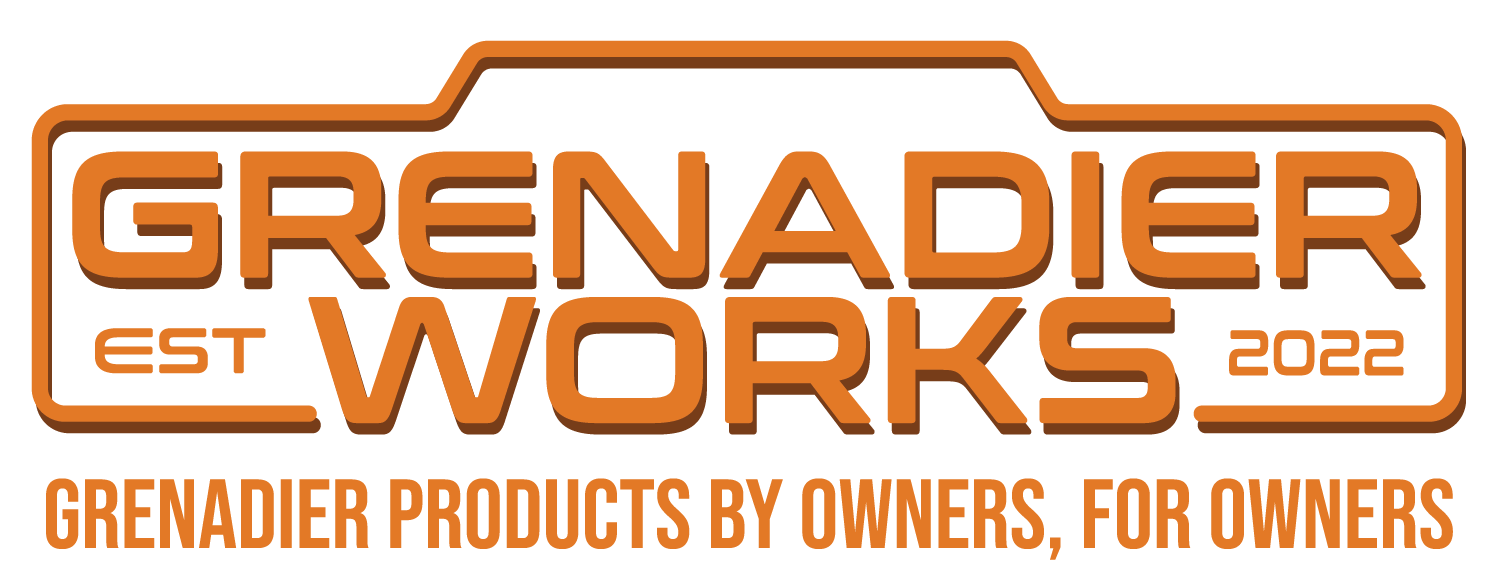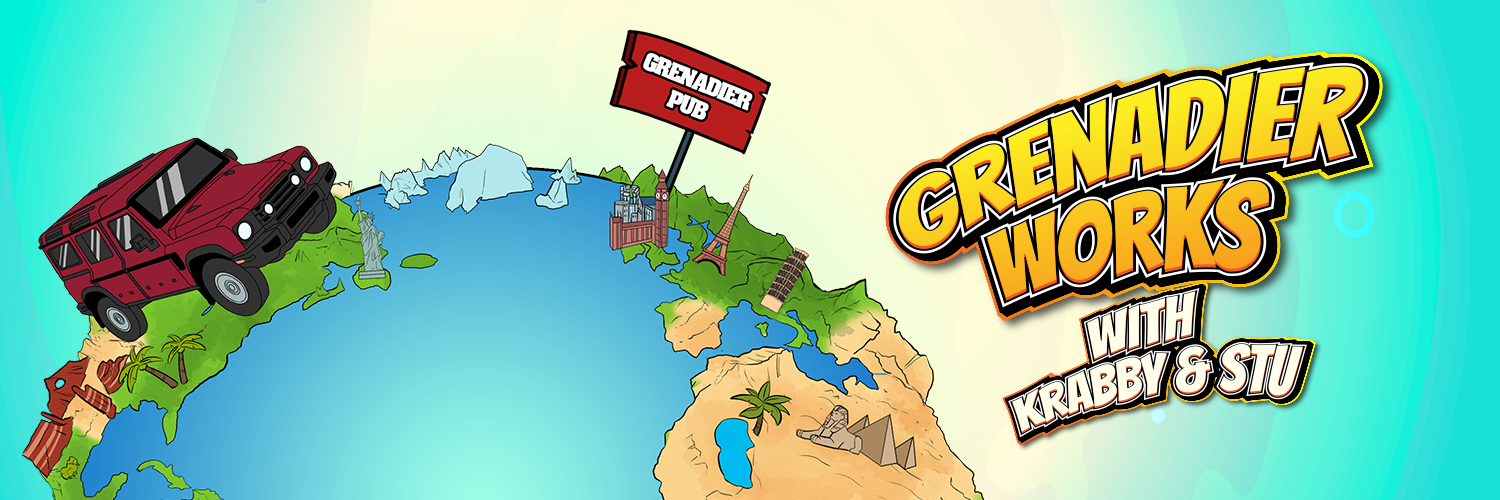It's a recall. Recalls tell me they are working to fix it. It's the unannounced TSB's (we think it will fail, but out of warranty when it does) or flat out ignoring that get me pissed.And let's keep this in perspective. This is fairly minor and should be fixable in the long term. Just think what would have happened if they selected the GM 6.2L as a power plant...
The Grenadier Forum
Register a free account today to become a member! Once signed in, you'll be able to contribute to the community by adding your own topics, posts, and connect with other members through your own private inbox! INEOS Agents, Dealers or Commercial vendors please use the contact us link at the bottom of the page.
-
Guest submit your best shot for a chance to win the December Photo Contest. Photo Contest Click Here
You are using an out of date browser. It may not display this or other websites correctly.
You should upgrade or use an alternative browser.
You should upgrade or use an alternative browser.
It is all pure speculation, but - there's rubber and there's another rubber. The old factory Land Rover suspension bushings lasted for 15 years and 100+ kmi, the OEM or genuine replacement only good for 3-4 years. It is possible that a driveshaft supplier (isn't it Spicer?) found a cheaper CV source and went with it.I doubt the boot is made by the CV assembler. What I have found happens on the supply side of it, is the supplier has a price point, they assemble to that price point using the lowest bid for pieces, and the end user tests and accepts it. The key part being, they signed off and they own it. I think it's quite possible none of the test units failed, as its not endemic. What I don't think happened with a CV, is cherry picking samples. That would portend foreknowledge of bad boot material, and what's the point of owning that?
You can imagine Ineos selecting a parts supplier and ordering a pilot batch of parts for testing. It would not be a stretch to imagine parts supplier hand-assembling and hand-picking the parts before sending them to the customer during the testing/supplier selection stage, and ... relaxing the tolerance a little once the main hurdle is behind.
I love the whole "this is all Ineos' fault" approach that some people take. That narrow view diminishes the role of the component supplier in ensuring the design of the vehicle remains sound during full rate production. I'm sure IA are just as pissed as we are about these faults. That said, after all these years GM are still finding new ways to build a bad engine so what's IA's excuse, right?
In situations like this I often say "It's not what happens, it's what happens next". Things will go wrong in any system. How the provider addresses it is what really matters. IA need to break the chain on this issue. It's affecting their customers and brand reputation and no doubt hurting future sales. According to feedback provided through our Forum Ambassador @Tom D, I think they understand the need to act. We're just waiting to see the actions.
_________________
Long waffle about engineering test and evaluation programs and design compromises (Goodnight, sleep well
On commencement IA had zero history with auto industry suppliers so de-risked the project by going with proven brand names, in this case Dana-Spicer for the driveshafts. There's no way the test team would have allowed a substandard part through to production if a fault was detected during testing.
Anyone that has been involved in Acceptance Test and Evaluation programs (ATE) knows there are detailed test serials designed to examine every element of a system before production sign-off. Once those test serials are completed they're not revisited unless a fault arises during ATE or there is a design change after ATE that triggers retesting.
ATE also assesses reliability and durability. This is relatively easy for established mature products because there is empirical data available (but if that data is supplied by the seller, it may not be accurate!). For new or modified designs or proven designs placed into a new application it's less straightforward. That places a high importance on the ATE program to prove the product is not only fit for purpose but will be reliable and durable during the target service life. The million miles of testing was the field component of IA's ATE program.
Cost engineering and supplier quality changes aside, did something else change on the vehicle between prototyping, ATE and full rate production?
We know from the Jeep world that this CV joint doesn't like running at high shaft angles. IA would have noted that (probably, possibly), but with input from Dana-Spicer likely determined they were within a reliable operating angle range. Any number of late changes could have secondary effects that impact the driveshaft (CV), but did not arise during ATE; for example castor angle, axle geometry, ride height, transfer case position, etc. Or, problems did arise during ATE but IA thought they had resolved them.
Case in point: The castor angle final setting is done through an eccentric cam built into each lower control arm rear attachment bolt. If IA had to limit the maximum castor angle to mitigate a problem elsewhere the easiest way to do that is to change the bolt cam radius. Reduce the castor angle and there can be more tendency towards bump steer and steering shimmy (hello shopping carts). Add a stiffer steering damper and it might become a manageable compromise but there is little margin left for changes, like increased spring heights, or deviation in individual component specifications.
Tell me you are delusional without telling me you are delusional.
Is that your inner voice breaking out or is that constructive comment directed at me?Tell me you are delusional without telling me you are delusional.
Try using this button
Giving the option to not be completely singled outIs that your inner voice breaking out or is that constructive comment directed at me?
Try using this button
View attachment 7898621
Not that your post is wholesale wrong, you certainly understand what you're talking about. But you're giving Ineos too much credit and certainly your case in point paragraph is dubious at best.
Thank you for your input and clarification. If you want the shiny diamond just hand me the catalog and mark the page. Don't make me guess.Giving the option to not be completely singled outBut you gone and ruined it.
Not that your post is wholesale wrong, you certainly understand what you're talking about. But you're giving Ineos too much credit certainly your case in point paragraph is dubious at best.
Since neither of us know what actually occurs inside IA our opinions and viewpoints are equally valid. I won't apologise for being optimistic about IA's capabilities. Nor will I support the wholesale pessimism that some like to pedal in this forum. Thanks to guys like @Tom D for stepping up and doing something proactive.
That's far enough off topic. Let's talk about driveshafts. And yes, I have had one replaced under warranty so I'm affected.
TeraFlex JL/JT Factory Replacement CV Joint Kit – High-Angle Rzeppa 1745000
...overnight from Amazon in the US.
Amazon.com: TeraFlex JL/JT Factory Replacement CV Joint Kit – High-Angle Rzeppa : Automotive
Buy TeraFlex JL/JT Factory Replacement CV Joint Kit – High-Angle Rzeppa: Joints - Amazon.com ✓ FREE DELIVERY possible on eligible purchases
a.co
Now part of my "spares" when traveling. Amazon.com: TeraFlex JL/JT Factory Replacement CV Joint Kit – High-Angle Rzeppa : Automotive
Buy TeraFlex JL/JT Factory Replacement CV Joint Kit – High-Angle Rzeppa: Joints - Amazon.com ✓ FREE DELIVERY possible on eligible purchases
a.co
Amazon Italy? Amazon Europe?
Teraflex Dealers?
Jeep Generation
Via Lago D'iseo, no. 10Fonte Nuova Rome, 00013
Phone: 39-6905-1705
Solid Garage 4×4
Via Zona Industriale, 23Siderno M. na Regio Calabria, 89048
Phone: +39 366 653 1100
Cheers!
Steve
Last edited:
The bronco guys are having the same issue with the exact same Rzeppa joint. Seems like the joint manufacturer has sold all these car companies a load of BS. The same joint fails in the bronco, Jeep, and grenadier. Misery loves company.

 www.bronco6g.com
www.bronco6g.com
The post author had an interesting modification:
“I checked mine yesterday and it's still intact...I have modified mine, the smaller clamp is removed from the boot. this allows the boot to move up and down the shaft as it moves with suspension. Thus saving the boot.”
I can see how that would help but I would also be concerned about water getting into the joint.

Teraflex Jeep JL CV joint adapted to Bronco...CONFIRMED FIT!
I thought I would be another Guinea pig And try out a new part With assistance from @Bmadda for his critical measurements, we Have a NEW replacement CV joint available now for the Bronco rear drive line. This is most helpful for the two-door Clan as we have the short drive line and greater...
The post author had an interesting modification:
“I checked mine yesterday and it's still intact...I have modified mine, the smaller clamp is removed from the boot. this allows the boot to move up and down the shaft as it moves with suspension. Thus saving the boot.”
I can see how that would help but I would also be concerned about water getting into the joint.
Last edited:
Oh well, if that's the standard, I say after much prayer by the drivshaft group, Jesus picked the part.Since neither of us know what actually occurs inside IA our opinions and viewpoints are equally valid.
That's far enough off topic. Let's talk about driveshafts. And yes, I have had one replaced under warranty so I'm affected.
Here's what they did.. They used an off the shelf part, and didn't ATE shit, as they figured everyone else did it. Saves time and $$$ when on a budget.... Which in way, really is praying to Jesus the part works.
I get a kick when someone in a conversation takes the time to give their input, and then makes a declarative statement requiring group obedience, stating the subject is now closed.
The bronco guys are having the same issue with the exact same Rzeppa joint. Seems like the joint manufacturer has sold all these car companies a load of BS. The same joint fails in the bronco, Jeep, and grenadier. Misery loves company.

Teraflex Jeep JL CV joint adapted to Bronco...CONFIRMED FIT!
I thought I would be another Guinea pig And try out a new part With assistance from @Bmadda for his critical measurements, we Have a NEW replacement CV joint available now for the Bronco rear drive line. This is most helpful for the two-door Clan as we have the short drive line and greater...www.bronco6g.com
The post author had an interesting modification:
“I checked mine yesterday and it's still intact...I have modified mine, the smaller clamp is removed from the boot. this allows the boot to move up and down the shaft as it moves with suspension. Thus saving the boot.”
I can see how that would help but I would also be concerned about water getting into the joint.
I did the same thing on mine. However I still installed the stainless clamp tie but left it just loose enough so things could adjust and settle as needed. If you set it wrong and tighten the clamp fully you will see the excess stress on the boot.
I did the same thing on mine. However I still installed the stainless clamp tie but left it just loose enough so things could adjust and settle as needed. If you set it wrong and tighten the clamp fully you will see the excess stress on the boot.
Makes sense. I wonder if there is a difference in production line assembly of our driveshafts that could be leading to quicker failure of the boot. Mine failed at 12,000 miles without a lift but with plenty of off road miles that included fully articulation the suspension.
Personally, I only saw the desire to return to subject of the thread, instead of pointless whining about what IA should have done.I get a kick when someone in a conversation takes the time to give their input, and then makes a declarative statement requiring group obedience, stating the subject is now closed.
Flirty behaviour is not condoned on here Zimm.[clipped]
....I get a kick when someone in a conversation takes the time to give their input, and then makes a declarative statement requiring group obedience, stating the subject is now closed....
Ironically my sidebar was about the pessimism that persists in here. Then you pop up all whack-a-mole style. Perfect, thank you.
If you would unclench your teeth for a moment you would see my last post was a redirect back onto the topic. Nothing more. I'm sorry your IBS flares up and sours your normally sunny disposition.
I just hit 10,000 miles since getting my lift installed. (Eibach Grenadier Pro Lift Kit 2.5")
CV boots holding up well. 7-10% mild to moderate off road.
CV boots holding up well. 7-10% mild to moderate off road.
Curious how much long distance driving you have done. Drives in excess of 1hr one way.I just hit 10,000 miles since getting my lift installed. (Eibach Grenadier Pro Lift Kit 2.5")
CV boots holding up well. 7-10% mild to moderate off road.
I have also ordered the terraflex as a spare. My original still looks fine after 45,000 miles. But I’ll be more comfortable with a spare in the boot.
Edit. I got mine from a company called Jeepey in the uk. They had it in stock.
Edit. I got mine from a company called Jeepey in the uk. They had it in stock.
Can you send a link please TomI have also ordered the terraflex as a spare. My original still looks fine after 45,000 miles. But I’ll be more comfortable with a spare in the boot.
Edit. I got mine from a company called Jeepey in the uk. They had it in stock.
Similar threads
- Replies
- 4
- Views
- 370
- Replies
- 6
- Views
- 920
- Replies
- 66
- Views
- 4K



